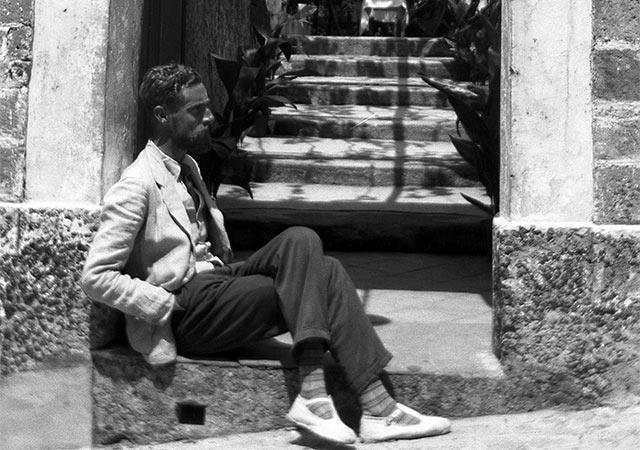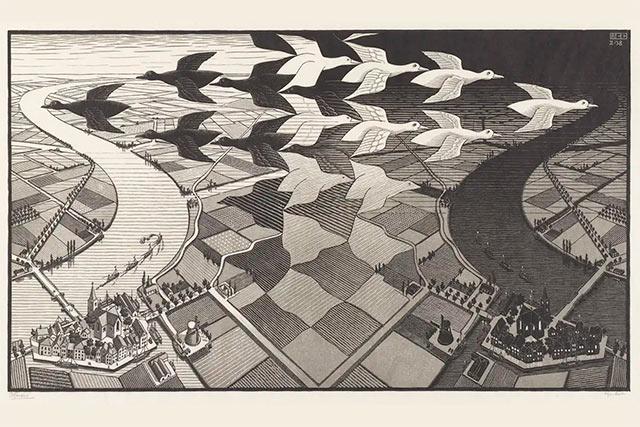
The life of Escher
M.C. Escher was born on 17 June 1898, in Leeuwarden. He’s the third son from the second marriage of George Arnold Escher, to Sara Gleichman. Escher’s father already had two sons from a previous marriage. Maurits Cornelis was named after his mother’s uncle. When he was small, his official name was changed by the family to the familiar 'Maukie', later becoming 'Mauk', a name that would also be used by his friends.
Escher’s father was a hydro-mechanical engineer and one of the Dutch 'Watermen' who worked in Japan in the late 19th century at the invitation of the emperor. After returning to the Netherlands, his father ultimately became, in 1890, Chief Engineer at the Ministry of Water in Leeuwarden. He rented the Princessehof house in Leeuwarden for his family, where he had his office at home.
Youth
In 1903, the family moved to Arnhem. Maurits Escher had a happy childhood despite suffering many illnesses. At the age of seven (1905) he spent quite some time alone in a children’s convalescent home in Zandvoort, recouping his strength. Like his brothers, Escher received a broad education, including carpentry and piano lessons. There was a telescope on the flat roof of the house that he and his father frequently used. He also immersed himself in drawing from a tender age.


Despite the age difference between Maurits Escher and his brothers, they would always remain close. Later, his half-brother Berend, professor of geology and subsequently rector of the University of Leiden, kept him informed about the latest scientific literature in the field of crystallography. Several of Escher’s prints were inspired by these insights.
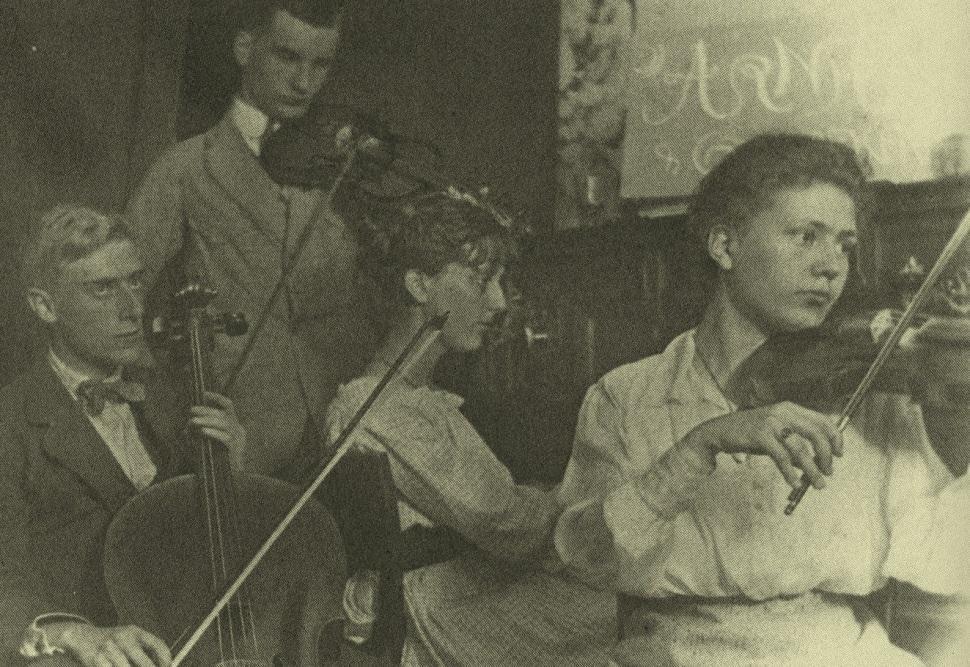
In 1912, M.C. Escher went to secondary school in Arnhem. There he met his life-long friends Roosje Ingen Housz, Bas Kist, Jan van der Does de Willebois and his sister Fiet. School did not interest Escher much. He had to repeat his second year and in 1918 he failed his final exams. Through his father’s connections, he was nevertheless accepted as a first-year student at the Technical University in Delft. His parents hoped that he would become an architect.
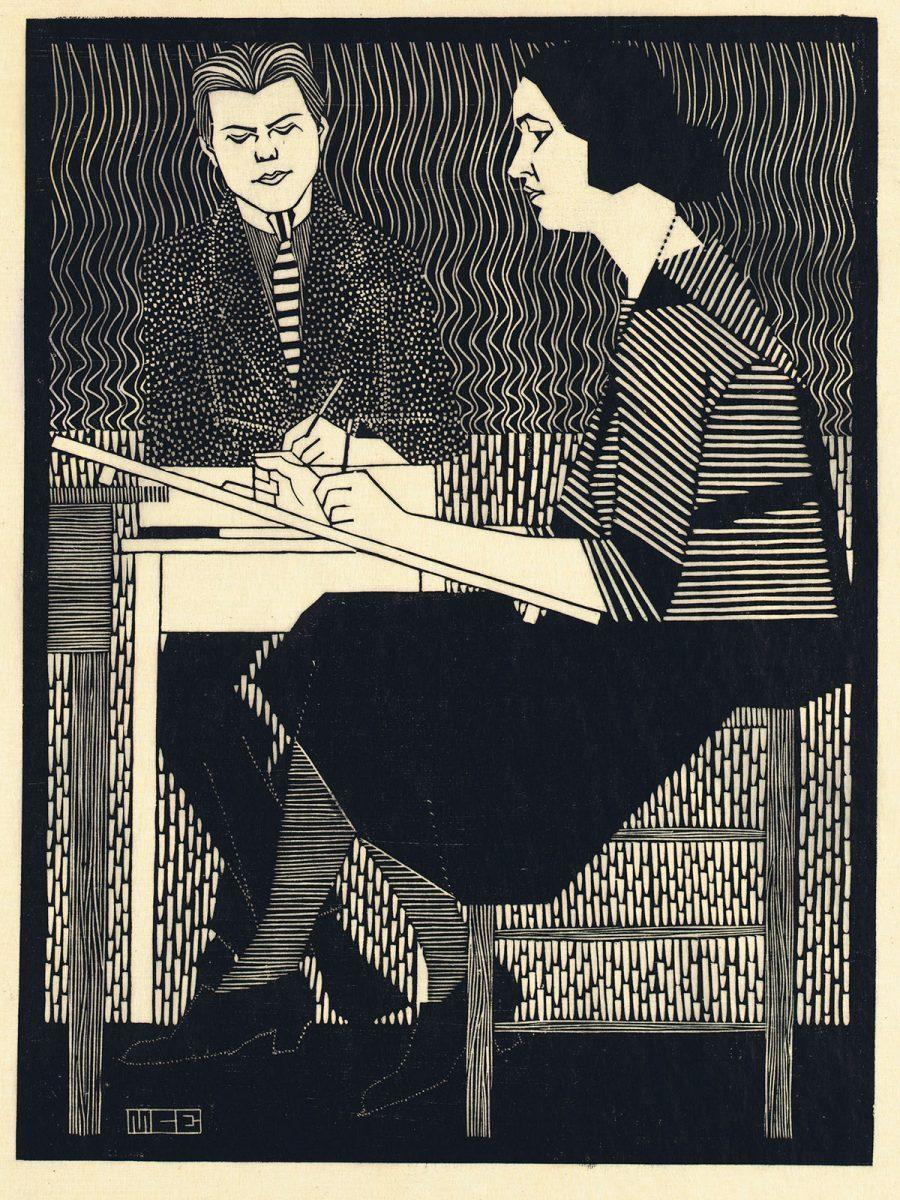
Education
His course in Delft was not a success and Escher did not complete his first year. As a compromise to his parents, Maurits Cornelis Escher started in September 1919 at the Haarlem School of Architecture, Decorative Arts and Artistic Crafts. He enrolled in the architecture department, but within a week he showed his work to the graphic arts teacher, Samuel Jessurun de Mesquita. He advised him to switch to the printmaking department. After a discussion with Jessurun de Mesquita, his parents consented to Maurits becoming a graphic artist.
One of the objections Escher’s father had against his son’s choice of profession was that he suspected he would not be able to support himself later in his life. This also turned out to be the case in the years after his education. Escher’s parents – and after his marriage in 1924 also his parents-in-law – supported M.C. Escher’s family. This support given to Maurits was not exceptional for the Escher family—father George was quick to help his sons if ever they needed it.
Travel and marriage
After his time at college in Haarlem, Escher made several long trips to Italy and, in 1922, to Spain. This is where he first visited the Alhambra in Granada, where he saw the Spanish-Islamic tiles with their continuous patterns. In March 1923, Escher met the Swiss family Umiker in the Italian town of Ravello. He fell in love with the youngest daughter Giulietta, known as Jetta. Once Jetta is back in Switzerland, a flurry of correspondence ensued over the next few months. Maurits Escher and Jetta Umiker finally married in Viareggio on 12 June 1924.
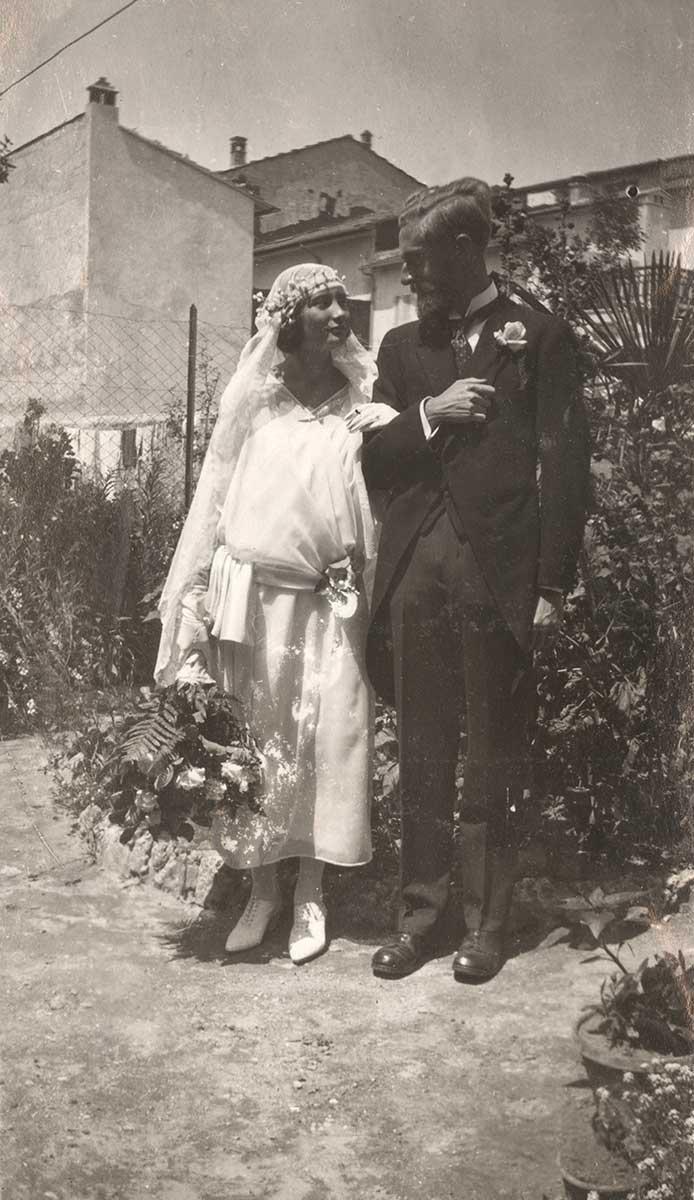
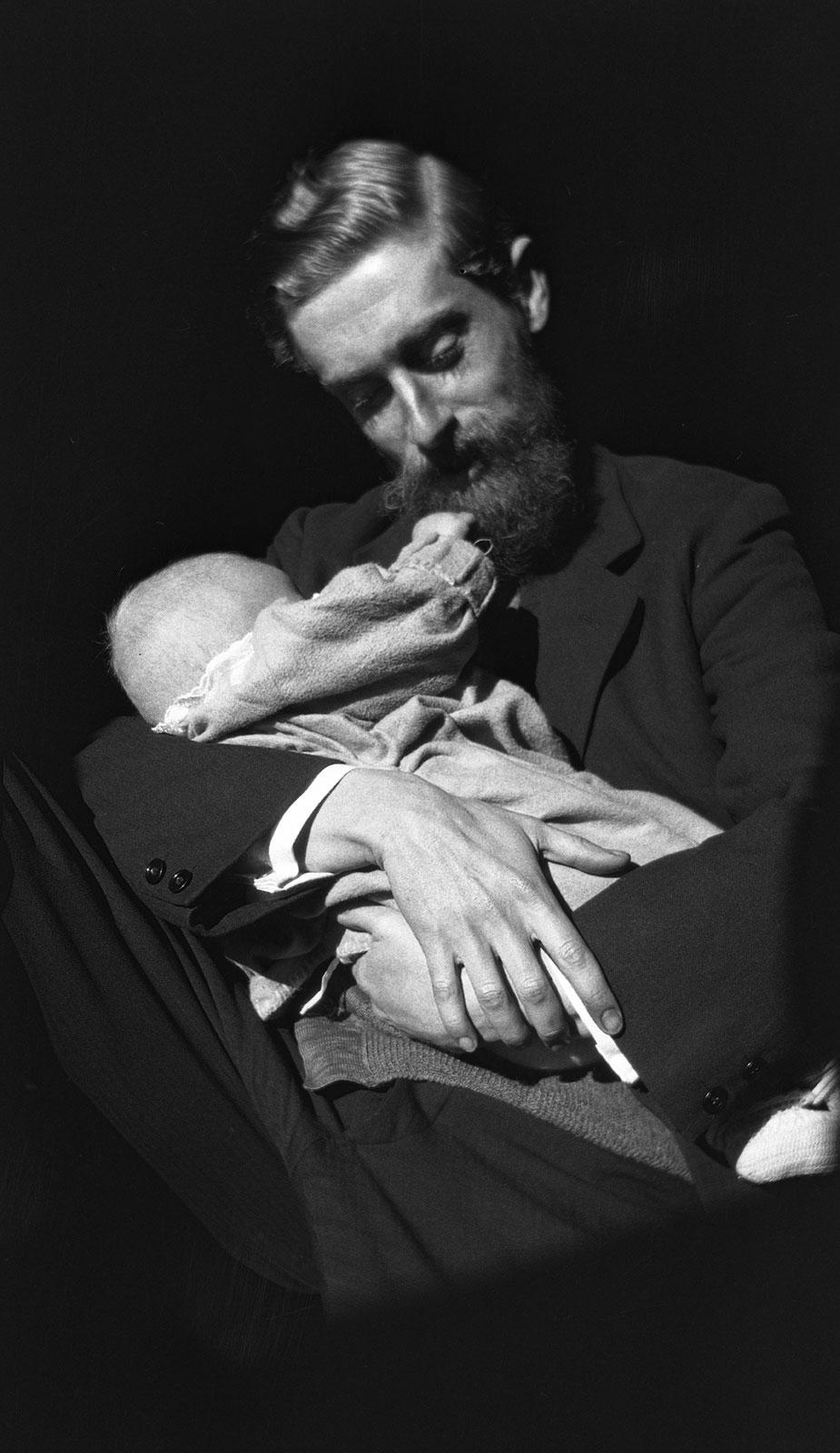
In the summer of 1925, Escher and Jetta took on an apartment in Rome. The following year saw the birth of their son George. Their second son, Arthur, was born in 1928. Even after his marriage, Escher continued to make his journeys through Italy. Each spring, Escher made a long journey through a different part of Italy, such as Calabria, Sicily, the Abruzzi and the coast around Naples. Escher loved these long walks and would continue to love them for the rest of his life.
His early years as an artist
In February 1924, Escher held his first Dutch exhibition at art gallery De Zonnebloem in The Hague. His work was extolled in Elsevier’s Illustrated Monthly of June 1924. From 1926 onwards, Escher exhibited in Italy and the Netherlands on a regular basis, including at The Hague’s Pulchri Studio, in Amsterdam, Leeuwarden and Utrecht, as well as in Warsaw, Prague and Madrid. He also started producing more and more lithographs from 1929 onwards, managing to learn and in time master the technique by producing prints such as Goriano Sicoli, Abruzzi (1929) and Self-portrait (1929). The lithograph Nonza, Corsica (1934), which depicts the Corsican village of Nonza, even won third prize at the International Exhibition of Contemporary Prints in the Art Institute of Chicago in 1934. His journeys through Italy, Spain and Corsica would continue to be a source of inspiration for his art. Even though his prints of towns and landscapes did not earn him fame, he did gradually make a name for himself as an artist, yet still struggled to provide for himself and his family.
Leaving Italy
Life in Rome became increasingly difficult. Son Arthur had been diagnosed with the early stages of tuberculosis and Escher was bothered by the rise of fascism in Italy. On 4 July 1935, Maurits, Jetta and their two sons move to the town of Châteaux-d'Oex in Switzerland. However, the isolated and cold environment made Escher unhappy. The family therefore only stayed there for a short time, because in 1937 they moved to Ukkel, near Brussels. Their third son Jan was born there in 1938.
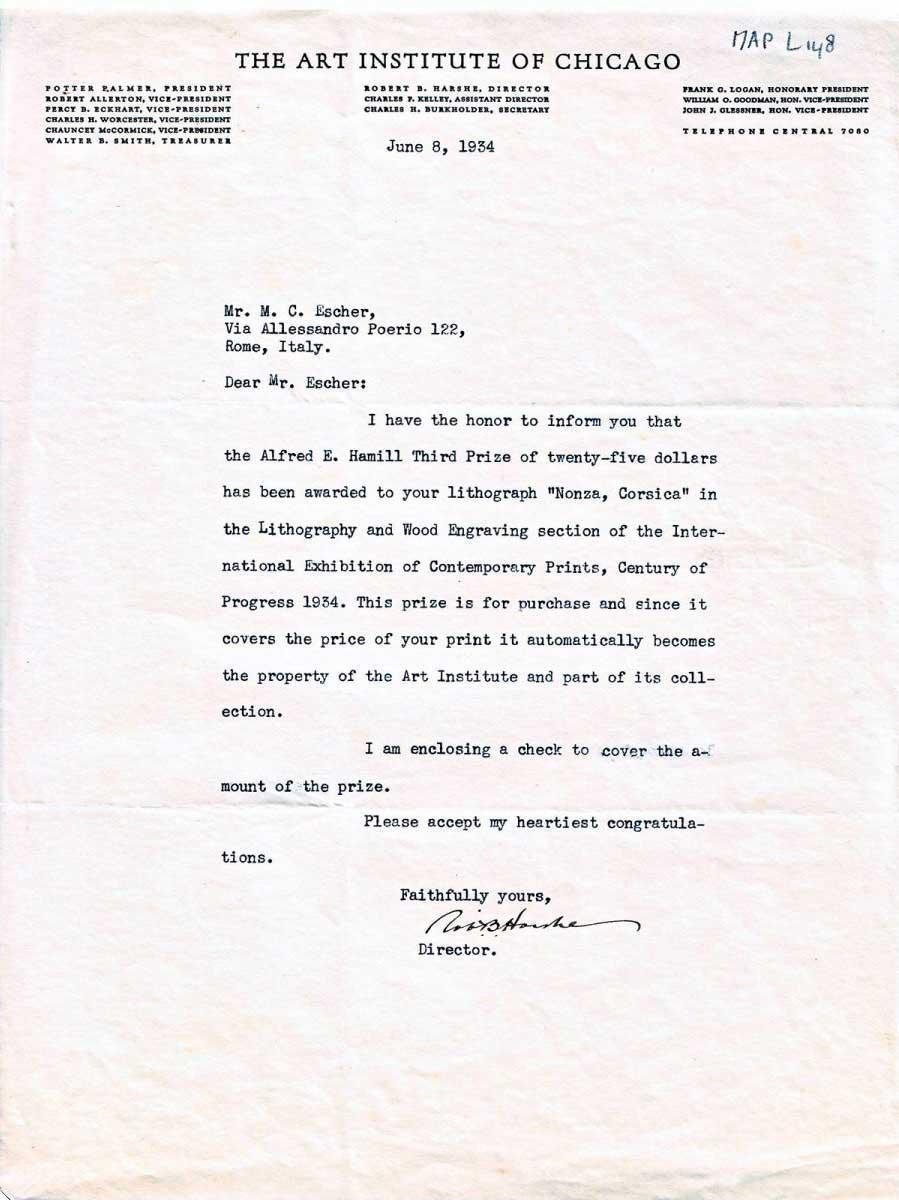
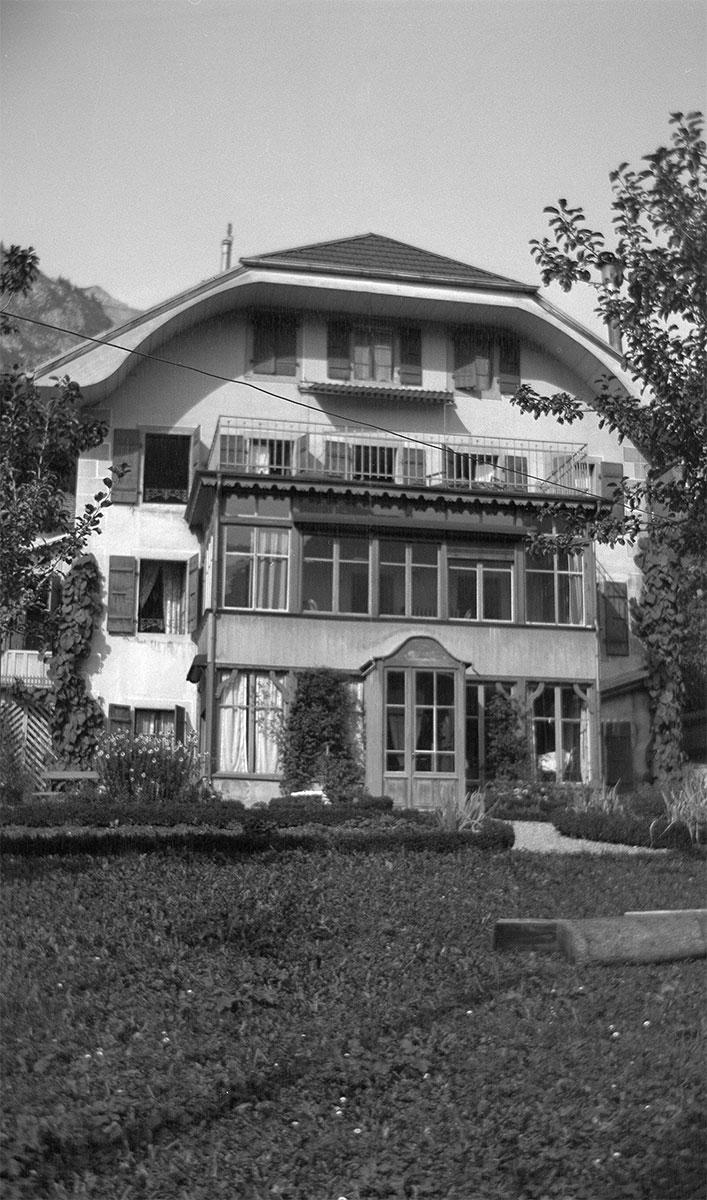
Another reality
Whilst still in Italy, Escher had so far managed to draw inspiration from the Mediterranean landscape. Nature and perception of nature took centre stage in his prints. Consequently, Escher’s depictions always seem to have a high degree of verisimilitude. The Swiss and Belgian landscapes did not inspire him, so Escher turned more and more to his own imagination. His previous fascination with landscapes was now redirected towards mindscapes: imaginary 'landscapes' created in his own head. He would spend hours contemplating new worlds full of impossibilities, always with Italy at the back of his mind. In prints like Still Life with Mirror (1934) and Still Life and Street (1937), Escher depicted these impossible, fantastical scenarios in an Italian setting.

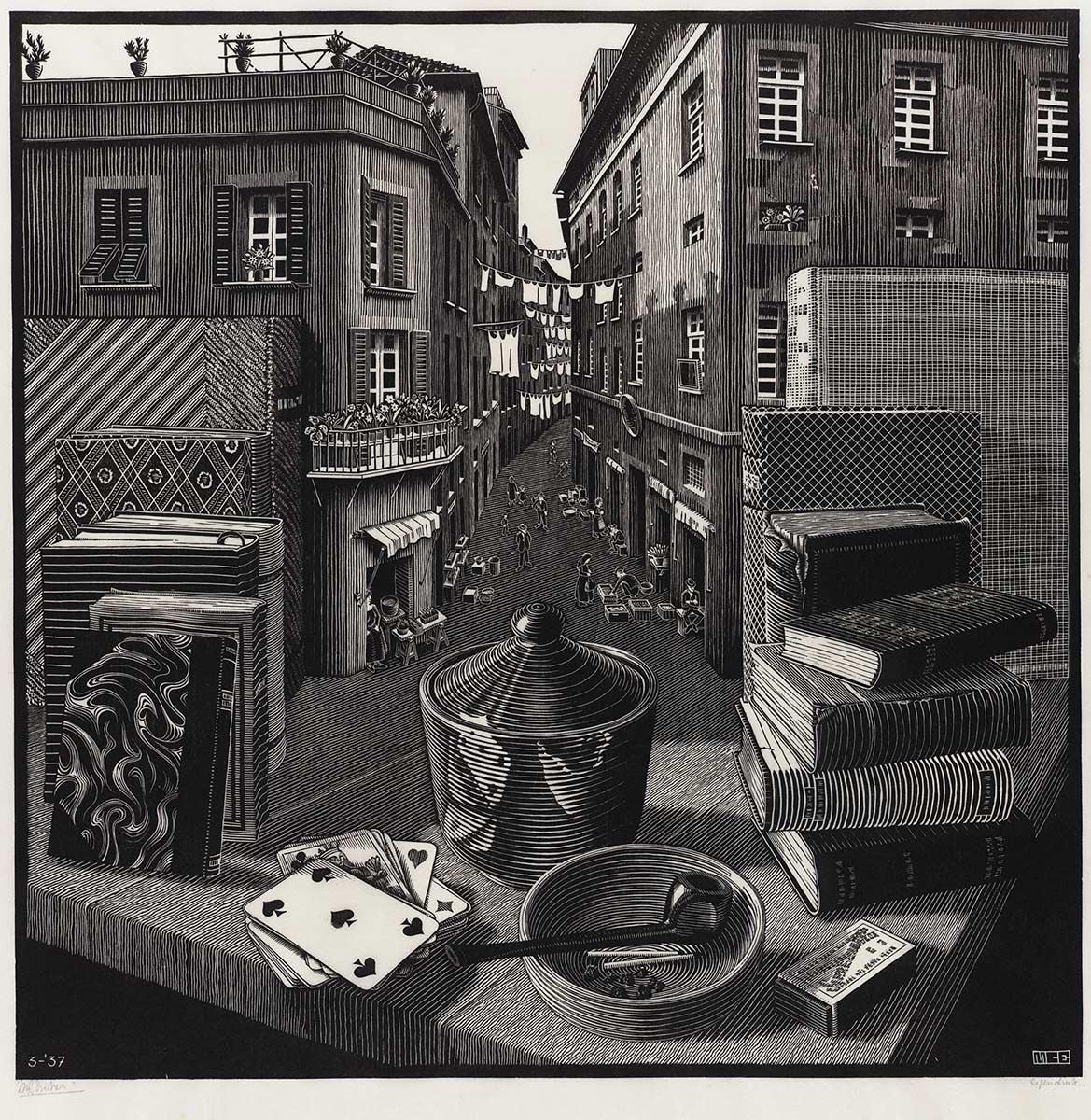
In 1936, Escher and Jetta made a long sea voyage to Spain. Escher visited the Alhambra in Granada for the second time, but also the Mezquita in Córdoba. Together with Jetta, he studied and copied the patterns they encountered, a process in which he also discovered his wife's talent. Jetta enjoyed drawing and painting, especially watercolours, but she did not exhibit her work. It differed from Escher's work in its looser style and greater use of colour. The sea voyage and the visits to the Alhambra and the Mezquita mark the moment when Escher once again plunged into creating tessellations. These interlocking patterns increasingly formed the basis of his prints.
Back in the Netherlands
Finally, in 1941, the family Escher settled in the Dutch village of Baarn, putting Escher firmly back on Dutch soil. Although he missed the Italian landscape, he felt at home and so would carry on living in the Netherlands until his death. He produced very few new prints during the Second World War. Escher was not permitted to participate in exhibitions during this period on account of his refusal to register with the Dutch Chamber of Culture. Even before his international breakthrough after the Second World War, Escher had always earned his money by selling his prints. It was, however, not enough to be able to maintain his family. In addition to his uncommissioned work, Escher often received commissions in the Netherlands, including for wooden intarsia panels in Leiden’s city hall in 1940-41 and for postage stamps and ex libris. He produced illustrations for his friends’ books or finished commissions for others. From the second half of the 1930s onwards, Escher increasingly experimented with astonishing, impossible scenes, which brought him more and more attention.
Fame
In 1951, the British magazine The Studio wrote about Escher’s work. The popular international magazines Time and Life published pieces on Escher’s work too. This created great interest in the United States. Escher received many requests for new copies of his prints. Day and Night (1938) was particularly loved. Escher printed his woodcuts himself and would go on to lament the fact that he had to do so over 600 times for this particular print. In 1961, the well renowned art historian E.H. Gombrich wrote about Escher’s work in the Saturday Evening Post. Escher was now also the subject of exhibitions in the Stedelijk Museum in Amsterdam (as part of the International Mathematical Congress) and in several locations in the USA and the UK. Finally, in 1968 at the Haags Gemeentemuseum (now Kunstmuseum Den Haag), Escher’s first retrospective exhibition was held in honour of his 70th birthday. In 1955, M.C. Escher was knighted and he was awarded the city of Hilversum’s Culture Prize in 1965. In 1967 he received a royal distinction again.
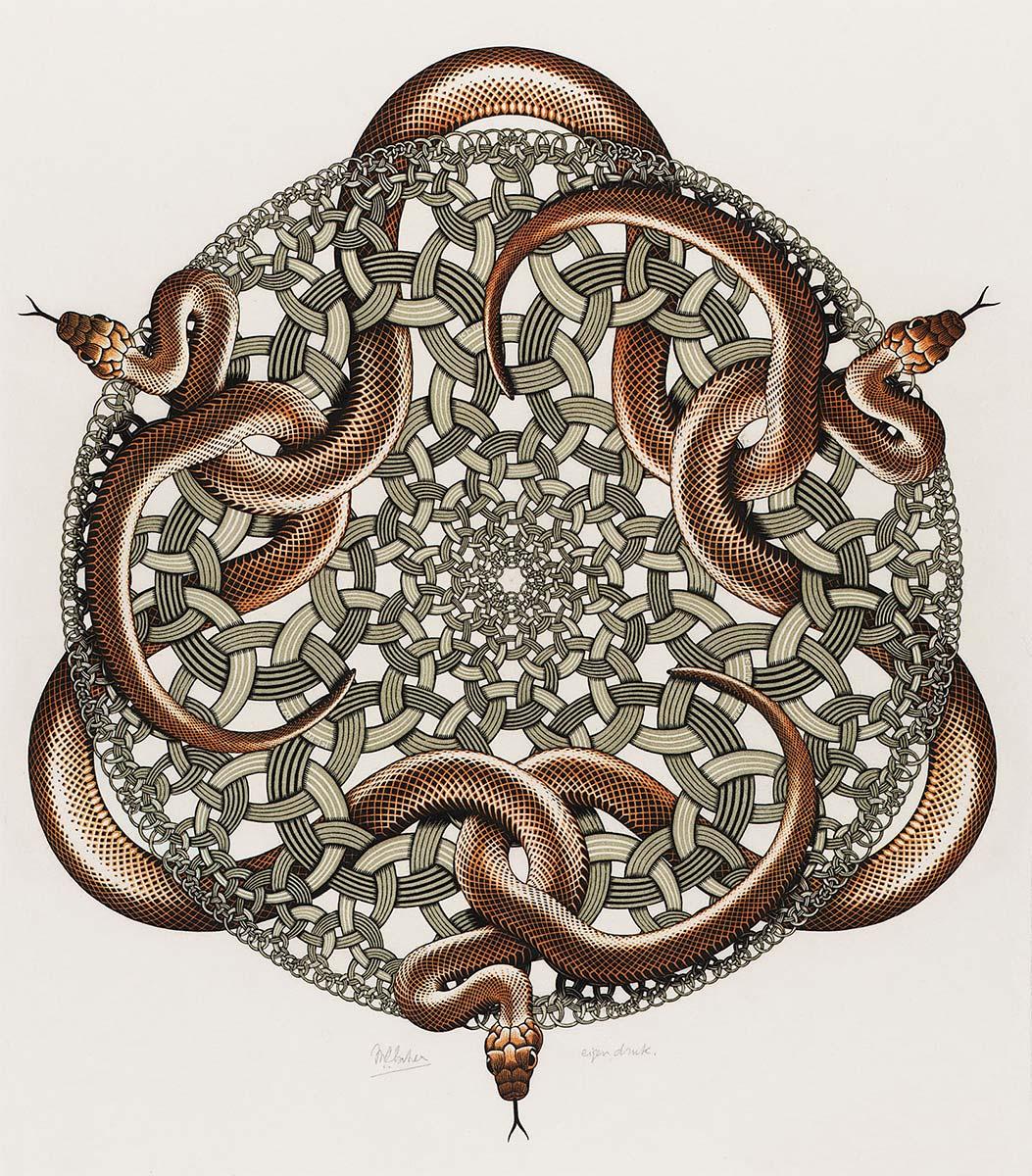
Death
Already since his earliest youth, M.C. Escher struggled with his health. In the last few years of his life, he underwent major surgery several times. In 1969, Escher produced his final woodcut: Snakes. After this, he continued to print older work but did not create any more new ones. Due to Escher’s deteriorating health, he moved into the Rosa Spier Huis in Laren in 1970. This retirement home was set up by Dutch harpist Rosa Spier in 1969 as a living and working community for older artists and scholars. There Escher was able to surround himself with like-minded people.
M.C. Escher died on 27 March 1972 in the Diakonessehuis hospital in Hilversum.
